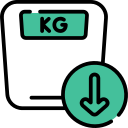Q. How does exercise help in reducing gas pain and bloating?
Doctor Answer is medically reviewed by SecondMedic medical review team.
Exercise is a natural and effective way to ease gas pain and bloating. Here’s how it works:
-
Stimulates Digestion
Gentle movements like walking or yoga help the digestive system work faster, moving gas through the intestines. -
Relieves Trapped Gas
Exercise encourages the body to release trapped gas, which can ease pain and discomfort quickly. -
Strengthens Abdominal Muscles
Strong core muscles help in better digestion and reduce the chances of bloating over time. -
Reduces Stress Levels
Stress can slow digestion and cause gas. Exercise reduces stress hormones, improving overall gut health. -
Improves Blood Flow
Physical activity increases blood flow to the digestive organs, helping them work more efficiently. -
Encourages Regular Bowel Movements
Movement keeps the intestines active, preventing constipation, which often leads to gas buildup. -
Posture Correction
Activities like yoga and stretching improve posture, allowing the intestines more space to process food smoothly. -
Boosts Metabolism
A faster metabolism helps the body digest food quicker, reducing the time for gas to form. -
Increases Endorphin Production
Endorphins not only improve mood but also help the digestive system function better, reducing bloating. -
Specific Exercises Help More
Light cardio, yoga poses like "wind-relieving pose," and gentle abdominal massages during exercise can bring instant relief.
Conclusion:
Want fast and natural relief? Start simple workouts today and feel the difference. Learn more on How does exercise help in reducing gas pain and bloating and enjoy a healthier, happier tummy!
Related Questions
-
Cardiology Heart disease How accurate is the echocardiography?
-
Cardiology Heart disease What is the difference between angina p
-
What are the common risk factors for both heart disease and stroke? | Secondmedic
-
Cardiology Heart disease What is the continuity equation in echo
-
How can patients prepare for an angioplasty procedure, and what should they expect during the process? | Secondmedic












